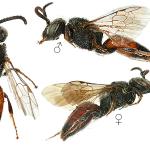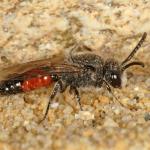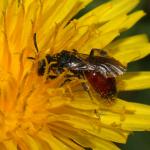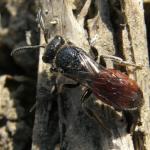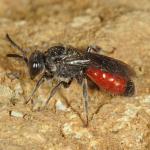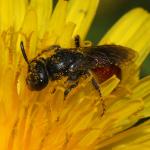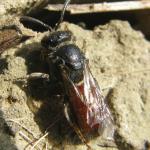Apis fulviventris SCOPOLI 1763; Apis minimus HARRIS 1776; Apis obscura GEOFFROY 1785; Apis rufescens GEOFFROY 1785; Apis rufescens GMELIN 1790; Apis labiata FABRICIUS 1793; Melitta divisa KIRBY 1802; Andrena minuta FABRICIUS 1804; Sphecodes similis WESMAEL 1836; Sphecodes zablocki BLÜTHGEN 1923
Widespread in southern Britain, being found from the Isles of Scilly and Cornwall to Kent, north to Yorkshire and Cumbria. Also known from Wales, the Isle of Man and the Channel Islands. It is not presently known from Ireland.
This is a Palaearctic species, found in south and central Europe east across Asia to Mongolia and south to North Africa (S Roberts pers. comm.).
This species is not regarded as scarce or threatened.
Occurring in a range of habitats, such as open woodland, heaths, calcareous grassland and coastal sites.
Univoltine; the female flies from late March to late September and the male from mid July to early October.
The species is probably a cleptoparasite of several species of Lasioglossum, including the common species calceatum (Scopoli), lativentre (Schenck) and leucozonium (Schrank). Less common Lasioglossum and also Halictus species can be used. Occasionally Andrena such as chrysosceles (Kirby) have been implicated as hosts. It appears that the parasitic behaviour has not been observed in any detail and there are no rearing records in the literature.
This Sphecodes visits various flowers with shallow corollas for nectar only; particularly noted are the families Asteraceae, Apiaceae and Fabaceae.
No data available.
2016


